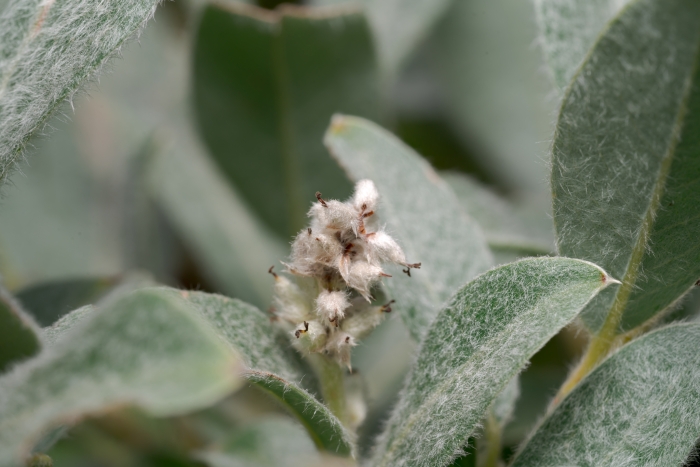Silky Willow
(Salix glaucosericea)
Silky Willow (Salix glaucosericea)
/
/

© Eleftherios Katsillis
CC BY 4.0
Image By:
© Eleftherios Katsillis
Recorded By:
Copyright:
CC BY 4.0
Copyright Notice:
Photo by: © Eleftherios Katsillis | License Type: CC BY 4.0 | License URL: http://creativecommons.org/licenses/by/4.0/ | Uploader: eleftherioskats | Publisher: iNaturalist |

















Estimated Native Range
Summary
Salix glaucosericea, commonly known as Silky Willow or Alpine Grey Willow, is a deciduous shrub native to subalpine and alpine zones in the mountains of Europe, including the Alps and the Carpathians. It is typically found at elevations of 3,000 to 6,600 feet, where it thrives in moist, well-drained soils along streams, in wet meadows, and in open, rocky areas. This species reaches a modest height of 30 to 49 inches and is characterized by its yellow-green, lanceolate leaves that are silky to the touch due to fine hairs. The Silky Willow blooms from June to July, producing catkins that are not particularly showy but are of ecological importance for pollinators.
The Silky Willow is valued for its ability to stabilize soil and for its use in riparian plantings to prevent erosion. It is also appreciated for its hardiness and adaptability to high-altitude garden conditions. In cultivation, it requires moist conditions and can tolerate a range of soil types, provided they are well-drained. It prefers full sun to partial shade. While not commonly used for ornamental purposes, it can be a practical choice for naturalistic plantings in mountainous regions. Gardeners should be aware that willows can be susceptible to pests and diseases such as willow scab and canker, and they may also have aggressive root systems that can interfere with nearby structures.CC BY-SA 4.0
The Silky Willow is valued for its ability to stabilize soil and for its use in riparian plantings to prevent erosion. It is also appreciated for its hardiness and adaptability to high-altitude garden conditions. In cultivation, it requires moist conditions and can tolerate a range of soil types, provided they are well-drained. It prefers full sun to partial shade. While not commonly used for ornamental purposes, it can be a practical choice for naturalistic plantings in mountainous regions. Gardeners should be aware that willows can be susceptible to pests and diseases such as willow scab and canker, and they may also have aggressive root systems that can interfere with nearby structures.CC BY-SA 4.0
Plant Description
- Plant Type: Shrub
- Height: 6-15 feet
- Width: 6-10 feet
- Growth Rate: Rapid
- Flower Color: N/A
- Flowering Season: Spring
- Leaf Retention: Deciduous
Growth Requirements
- Sun: Full Sun, Part Shade
- Water: High
- Drainage: Medium, Slow
Common Uses
Bird Garden, Erosion Control, Water Garden
Natural Habitat
Native to subalpine and alpine zones in the mountains of Europe, including the Alps and the Carpathians, thriving in moist, well-drained soils along streams, in wet meadows, and open, rocky areas
Other Names
Common Names: Silky Willow, Grayleaf Willow, Gray Willow
Scientific Names: , Salix glaucosericea, Salix sericea,
GBIF Accepted Name: